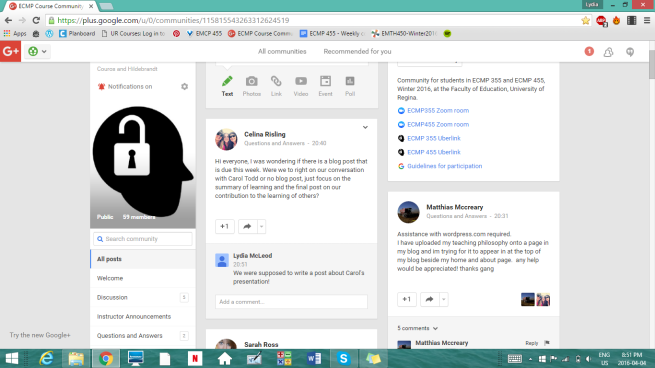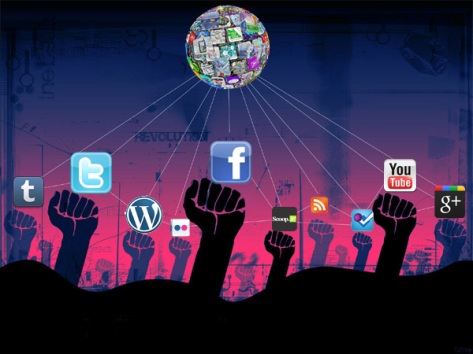This class has introduced me to a lot of new things. Due to the fact that I took ECMP 355 with a different instructor, the use of blogs and twitter was a new experience for me. At the beginning of the course I was hesitant with commenting on blogs, I honestly did not know what to write. However, once I began to think about how my comments on blogs could be similar to comments I will give to my students, I think my commenting began to become more sincere, and I tried to pose questions that would extend the thinking of others.

I will openly admit I often find it hard to come up with stuff to tweet out. I enjoy using the tool to see what other educators are doing, and I enjoy looking through all the resources that twitter can provide. This class was my first experience with twitter, and I think I’ve tried very hard to utilize the tool. As a class we participated in the STARS chat, I thought it was a very interesting experience, in a short period of time you are able to see so many different opinions. Twitter was also a good place to engage in conversation, and it was an easy way to reach out to people.

Twitter was also a great place to share tools that you found online, and that you thought could be useful for classmates.

I would say that Google Plus was useful if you wanted a question answered by someone in this class. The use of Google Plus allowed me to see how I could possibly incorporate it into my future classrooms. I used Google Plus a couple of times, and I found that my questions were answered very quickly and that people were very eager to answer questions posed within the community.

Overall I would say that I was helpful in the contribution of others learning and I think I was most active with commenting on others blogs. I found that commenting on blogs was the most sincere for me because I was able to voice my opinion and hopefully present new ideas to my classmates. To see more of my participation check out my Log.



